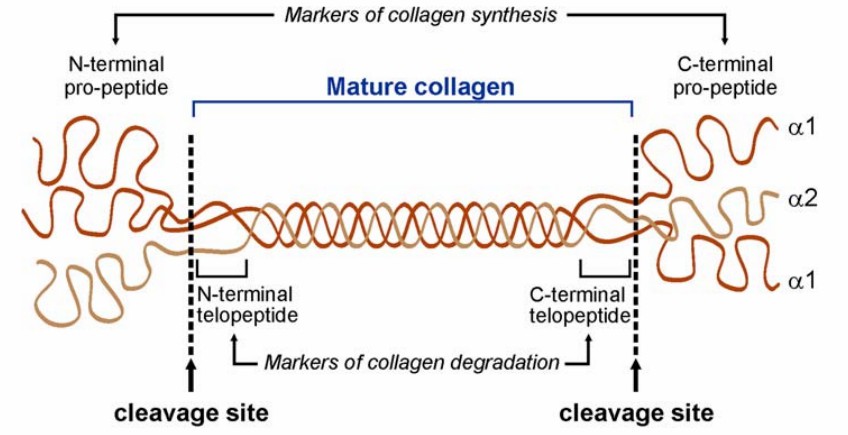COL1A2 and Associated Diseases
Introduction to COL1A2 Gene
Being a protein-coding gene located at chromosome 17q21.3 of mankind, the COL1A2 gene plays a crucial role in maintaining the normal physiological functions of collagen. It encodes the pro-alpha2 chain, which is a main component of type I collagen. Type I collagen is composed of two pro-α1(I) chains encoded by the COL1A1 gene and one pro-α2(I) chain encoded by the COL1A2 gene. Those three chains mentioned above amalgamated to form a rope-like procollagen molecule. Subsequently, the procollagen molecule evolves into mature collagen through a series of reactions catalyzed by various biological enzymes. These mature collagen molecules then place themselves into spindly fibrils, which form fairly stable cross-links with each other in the spaces of different cells, thus forming strong type 1 collagen fibers. This fiber-like structure is responsible for connecting tissues and is a dominating component of the dermis, bones, cartilage, blood vessel walls, tendons, and other connective tissues.
 Fig.1 Structure of the collagen molecule, pro-collagen is comprised of two alpha-1 chains and one alpha-2 chain intertwined into a triple helix. (Fan, 2012)
Fig.1 Structure of the collagen molecule, pro-collagen is comprised of two alpha-1 chains and one alpha-2 chain intertwined into a triple helix. (Fan, 2012)
COL1A2 and Associated Diseases
- Osteogenesis Imperfecta
Osteogenesis imperfecta (OI), also known as brittle bone disease, is a kind of congenital disease associated with qualitative or quantitative collagen type I defects. OI can be divided into different types, and different types have different clinical symptoms. Symptoms identified so far include blue sclerae, broken bones, loose joints, hearing loss, curved spine, difficulty breathing, and dental problems. To date, mutations in 16 different genes have been detected to bring about severe OI phenotypes. Among them, about 90% of the mutations are associated with the alterations of the COL1A1 and COL1A2 genes.
- Ehlers-Danlos syndrome
Ehlers-Danlos syndrome (EDS) is a cluster of connective tissue disorders caused by variations in the structure, manufacture, and processing of collagen. The clinical symptoms of the patient with this disease include joint dislocation and sprain, skin chafing, flat feet, and heart problems. As mentioned before, the COL1A2 gene plays an important role in maintaining normal physiological functions of collagen, so its mutation is one of the main reasons for the occurrence of Ellers-Danros syndrome. As reported (Budsamongkol, 2019), the mutation in exon 49 of COL1A2 caused glycine substitution in the carboxyl terminus of α2(I)-collagen, which leads to EDS.
- Osteoporosis
Osteoporosis is a bone disease that occurs when bone mass decreases and bone tissue weakens. People with osteoporosis are prone to fractures. A recent study shows that missense mutations of the COL1A2 gene may contribute to low bone mass decreases and osteoporotic fractures. In addition, the mutations in the COL1A2 gene can affect skeletal phenotypes in at least two ways.
Creative Biolabs is an outstanding biotechnology company that is devoted to helping you solve your problems. If you have any confusion about the COL1A2 gene, we are always willing to offer assistance. please contact us at any time.
Reference
- Fan, D.; et al. Cardiac fibroblasts, fibrosis and extracellular matrix remodeling in heart disease. Fibrogenesis & Tissue Repair. 2012, 5: 15. Distributed under Open Access license CC BY 4.0, without modification.
